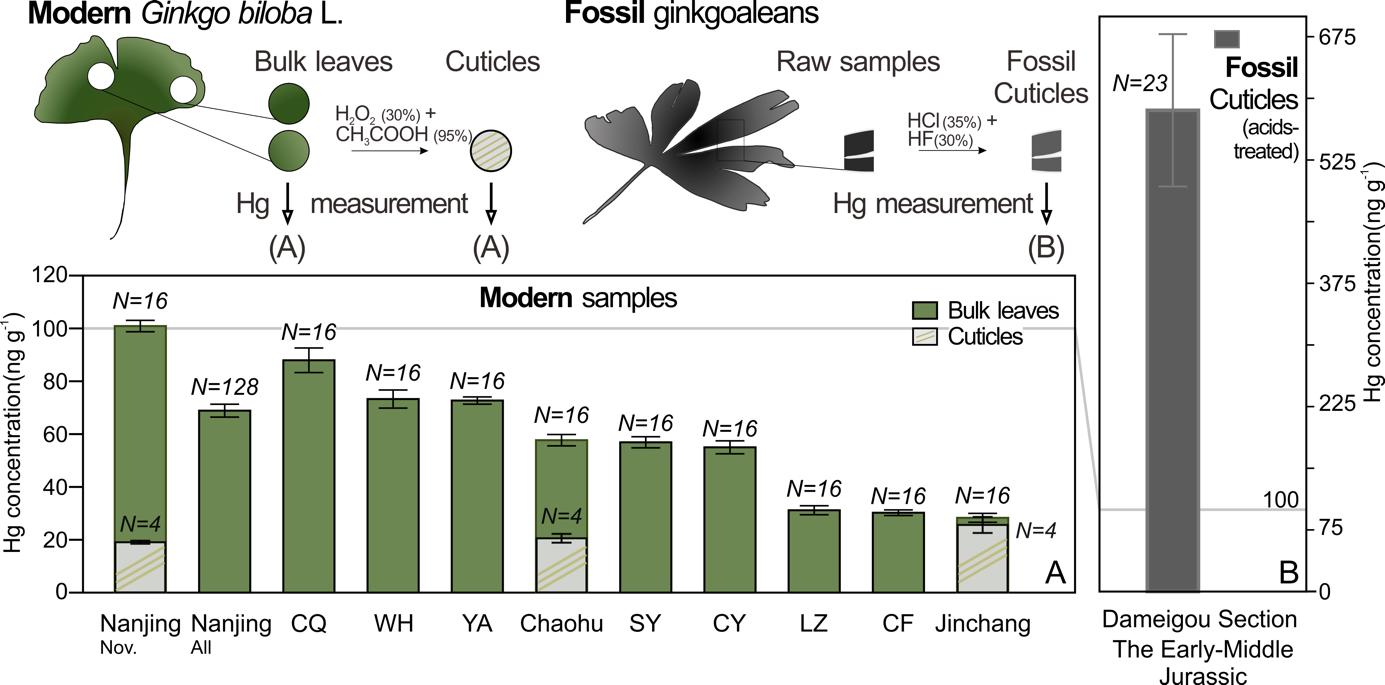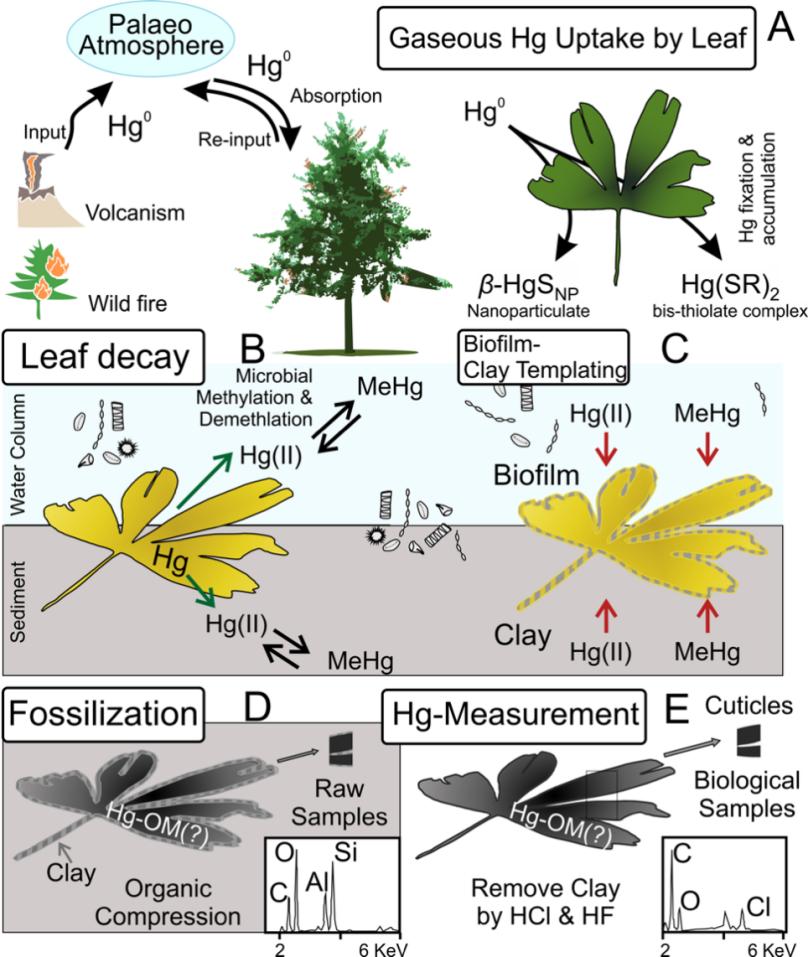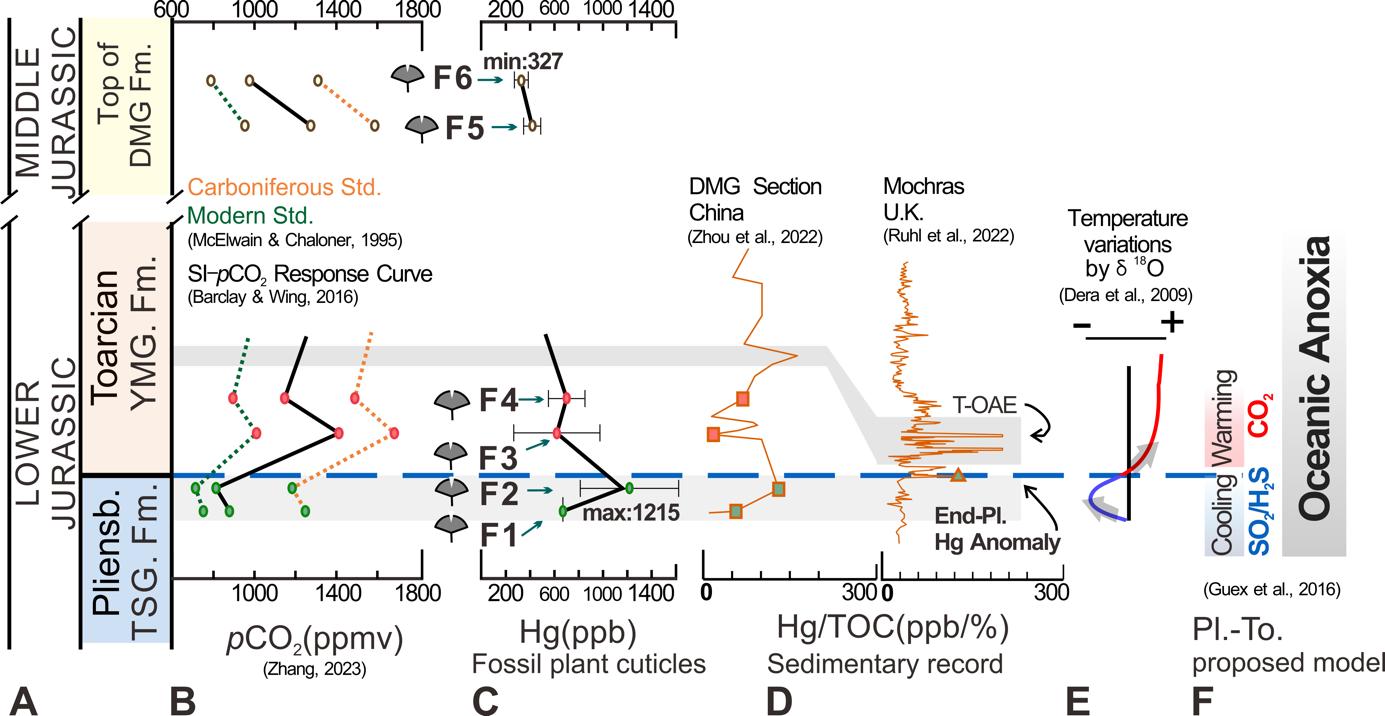Previous studies have shown that approximately 80% of the Hg contained in above ground plant tissues is stored in leaves, with almost all of the Hg in leaves originating from the atmosphere. The close correlation between plant leaves and atmospheric gaseous elemental mercury suggests that plant leaves may serve as a potential passive indicator of changes in atmospheric Hg0.
During geological history, the anomalous Hg0 in the atmosphere is often triggered by volcanic activities or wildfire events. Plants during the same period may absorb excess Hg0 from the atmosphere and preserve information about Hg anomalies in fossils. However, whether fluctuations in palaeo-atmospheric Hg can be recorded and preserved in leaf fossils from the past remains a question that urgently needs to be studied.
Recently, an international research team led by Prof. WANG Yongdong from the Nanjing Institute of Geology and Palaeontology, Chinese Academy of Sciences (NIGPAS), and Dr. Micha Rhul from Trinity College Dublin, the University of Dublin, Ireland, conducted studies on the above issue and proposed that fossil leaves of ginkgoaleans may provide clues to trace changes in palaeo-atmospheric Hg0 during geological history. This new research result was recently published in the international journal Palaeogeography, Palaeoclimatology, Palaeoecology.
By measuring the total mercury content (THg) in leaf samples collected monthly during the growing season of living Ginkgo biloba (April to November), as well as leaf samples collected from 10 different regions across China, the study team suggested that background atmospheric gaseous mercury concentrations (represented by Total Gaseous Mercury, TGM) in regional environments may be one of the main factors influencing foliar mercury concentrations in Ginkgo leaves.
In addition, the researchers investigated the THg in fossil ginkgoalean samples from the Early to Middle Jurassic period collected from the Dameigou area in the Qaidam Basin, Qinghai Province. “We observed that the THg in fossil samples (585.5 ng?g-1) was significantly higher than that in modern Ginkgo leaf samples (61 ng?g-1) and sediment samples from the same strata (113 ng?g-1)”, says WANG.
WANG add, “considering possible Hg migration during fossilization, we hypothesised that the high Hg content in fossil samples may be due to the absorption and storage of excess Hg0 during leaf growth, the retention of Hg in leaves and the loss of leaf content during fossilization”. This result suggests that the Karoo-Ferrar Large Igneous Provinces event in the Early Jurassic period caused changes in global palaeo-atmospheric Hg0, thereby affecting Hg levels in plant leaves during the same period.
This project aims to explore the response of the geochemical characteristics of leaves of "relict plants" such as Ginkgo to climate change, so as to provide more key information from paleobotany materials for research on paleoclimate and paleoenvironments.
This research was supported by the National Natural Science Foundation of China, the Strategic Priority Research Program of the Chinese Academy of Sciences (B), and the China Scholarship Council.
Reference: Zhang Li, Wang Yongdong*, Ruhl Micha*, Kovács EB, Xu Yuanyuan, Zhu Yanbin, Lu Ning, Chen Hongyu, 2024. Plant cuticle as a possible palaeo-Hg proxy: Implications from Hg concentration data of extant Ginkgo L. and extinct ginkgoaleans. Palaeogeography, Palaeoclimatology, Palaeoecology, 647, 112214. https://doi.org/10.1016/j.palaeo.2024.112214.

Comparisons of Hg concentrations in modern Ginkgo leaf cuticle samples (A) and fossil ginkgoalean cuticle samples contain higher Hg concentrations (B)

Possible pathways of Hg migration in leaves during fossilization

Chemostratigraphic and fossil ginkgo cuticle records for the Lower?Middle Jurassic of the Dameigou Section, Qaidam Basin, China
Contact:
LIU Yun, Propagandist
Email: yunliu@nigpas.ac.cn
Nanjing Institute of Geology and Palaeontology, Chinese Academy of Sciences
Nanjing, Jiangsu 210008, China
Download:
